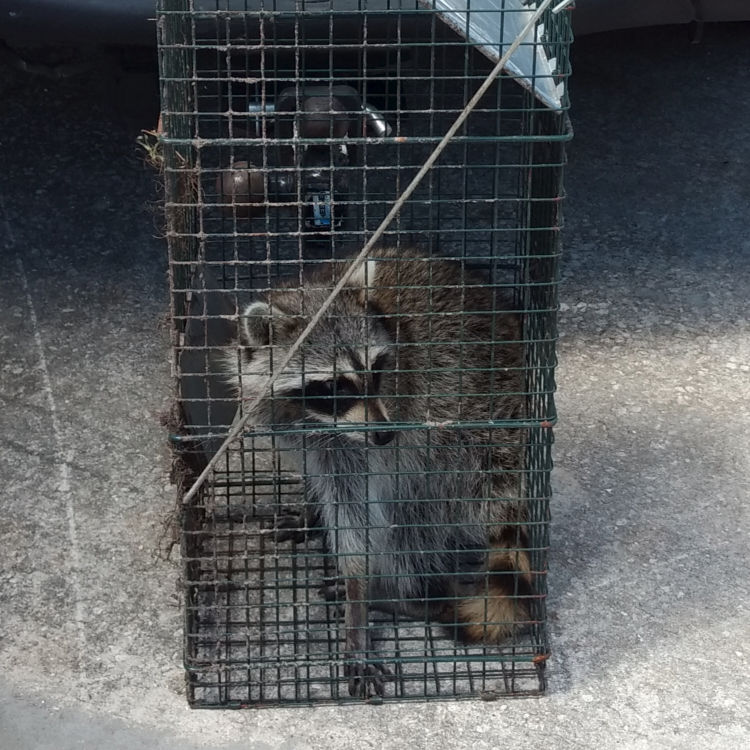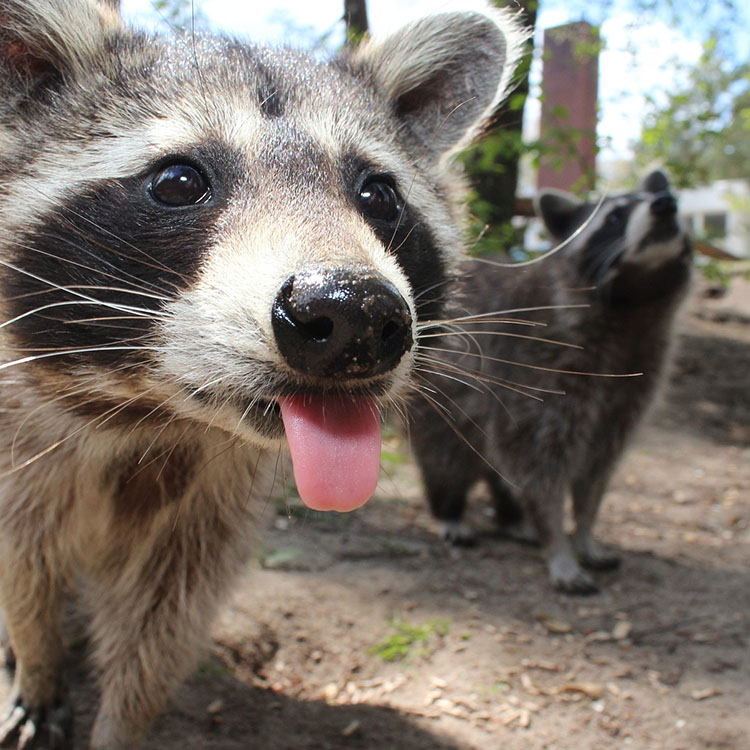How to Trap a Raccoon
Traps are a great way to solve your raccoon problem. Not only do they ensure that you don't have to harm these creatures, but it also provides a save way for the animal to be relocated to a new space. This is the most humane way of removing these creatures from your property and it is the main method used by wildlife service professionals across the country.

Are Traps Legal in My Area?
Our team operates in various areas of the country and our local wildlife specialists are well-informed about the local laws, ordinances, and regulations regarding raccoon removal in each of these cities, counties, and states. Read about your local area and their guidelines for nuisance wildlife removal before setting traps on your property. Not following local specifications can result in fines, and in some extreme cases, jail time.
What Kind of Trap Should I Use?

Any raccoon trap that you can purchase should do the trick. Make sure it is designed for raccoons and has the correct bat inside it when you set it. You'll want to get a trap that allows you to pick it up with a handle once the raccoon is trapped inside. Don't use kill traps if you can avoid it. Raccoon carcasses can be very odorous and attract larger wildlife. While these creatures cause damage to our homes and are frustrating, it's not humane to kill these creatures, and our service professionals will always find another way to solve your raccoon problem without extermination.
What Do I Do With a Trapped Raccoon?
Each city and state has different rules for transporting trapped animals. Check local statues before attempting to relocate a raccoon from your property. Often times, you will need to call local animal control or wildlife removal specialists to remove the trapped raccoon from your home and or business themselves because they have the proper licensing. Licensesd wildlife removal specialists usually take raccoons 10 miles or more away from where they were trapped so that they do not find their way back, and release them in approved sites like nature preserves or wildlife conservation areas.
